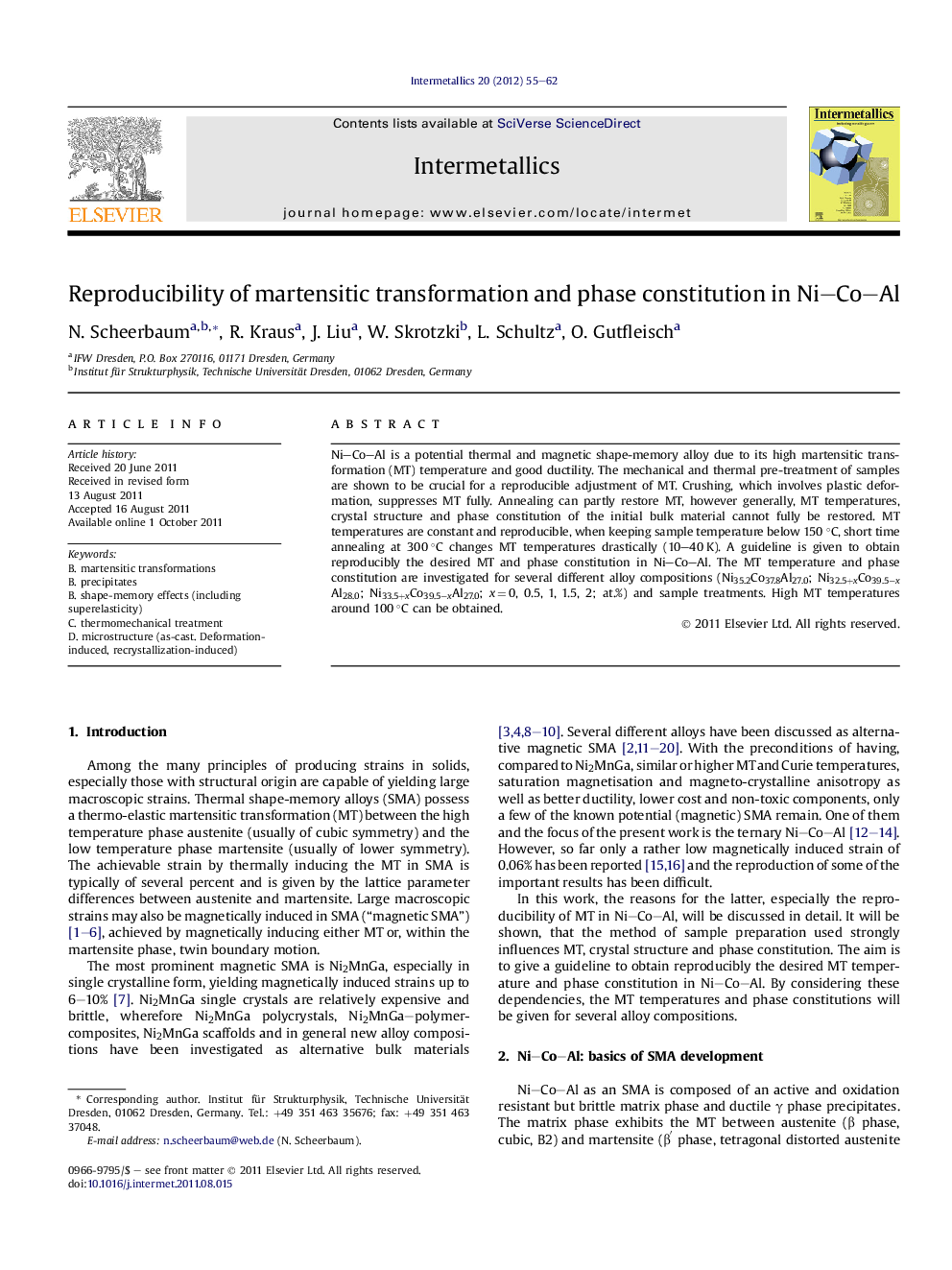| Article ID | Journal | Published Year | Pages | File Type |
|---|---|---|---|---|
| 1600594 | Intermetallics | 2012 | 8 Pages |
Ni–Co–Al is a potential thermal and magnetic shape-memory alloy due to its high martensitic transformation (MT) temperature and good ductility. The mechanical and thermal pre-treatment of samples are shown to be crucial for a reproducible adjustment of MT. Crushing, which involves plastic deformation, suppresses MT fully. Annealing can partly restore MT, however generally, MT temperatures, crystal structure and phase constitution of the initial bulk material cannot fully be restored. MT temperatures are constant and reproducible, when keeping sample temperature below 150 °C, short time annealing at 300 °C changes MT temperatures drastically (10–40 K). A guideline is given to obtain reproducibly the desired MT and phase constitution in Ni–Co–Al. The MT temperature and phase constitution are investigated for several different alloy compositions (Ni35.2Co37.8Al27.0; Ni32.5+xCo39.5−xAl28.0; Ni33.5+xCo39.5−xAl27.0; x = 0, 0.5, 1, 1.5, 2; at.%) and sample treatments. High MT temperatures around 100 °C can be obtained.
► Suppression of thermo-elastic martensitic transformation (MT) by medium plastic deformation. ► Irreversible property changes by pulverisation: bulk and corresponding particles have different MT temperatures. ► Microstructure (grain/particle size, presence of precipitates) influences MT. ► MT temperatures around 100 °C possible.
